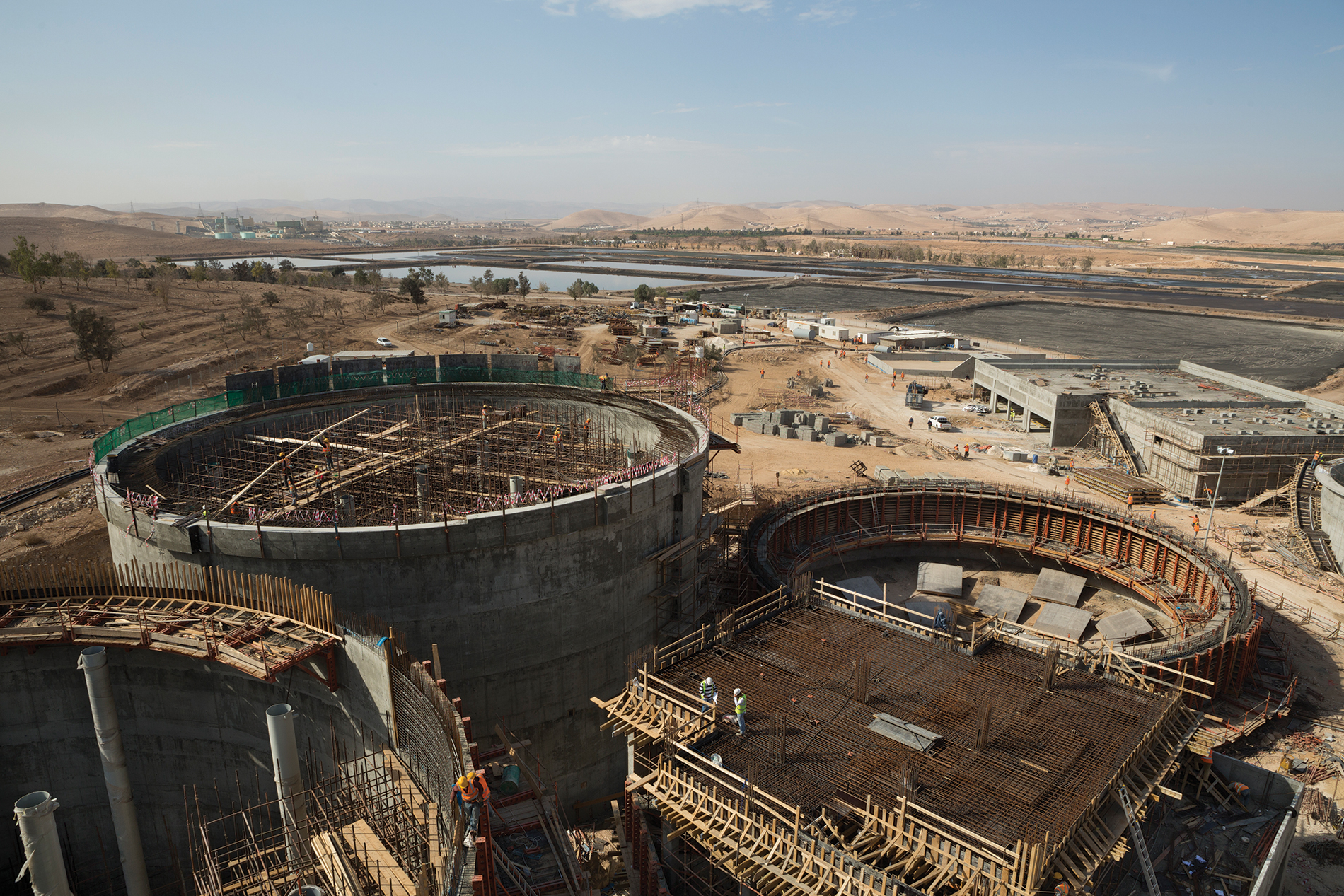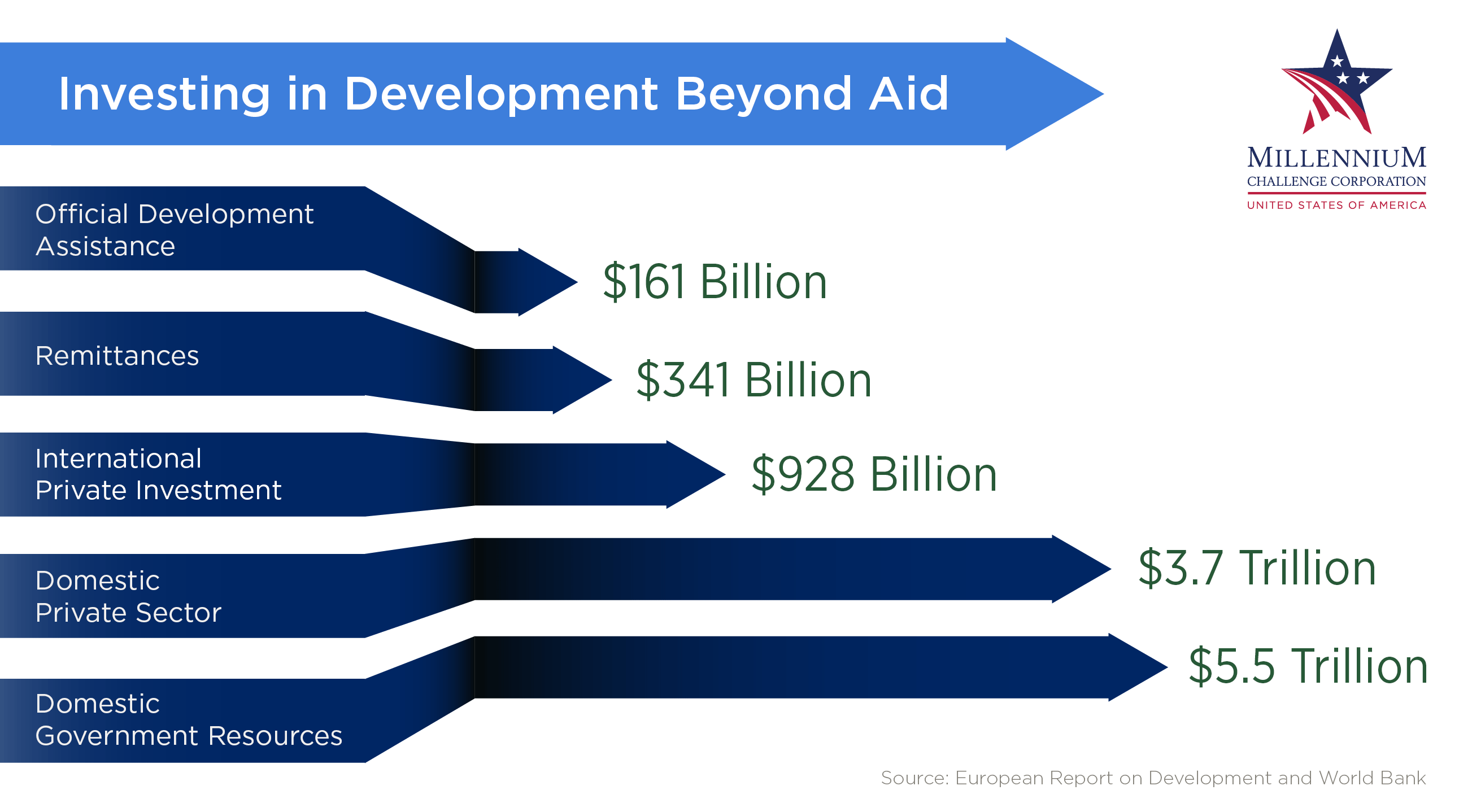
Jake Lyell for the Millennium Challenge Corporation
An aerial photograph shows construction of new wastewater digesters at the As Samra Treatment Plant in Zarqa, Jordan. As part of the $275 Million compact with Jordan, MCC is assisting in the expansion of the existing plant with a public-private partnership in order to increase its capacity to handle sewage and produce much needed treated water for drinking and irrigation.
This September, the international community aims to adopt a new set of Sustainable Development Goals that will outline global development targets to replace the expiring Millennium Development Goals.
We have made much progress in the fight against extreme poverty, but enormous needs remain.
The proposed global development objectives have a multi-trillion dollar price tag, with infrastructure needs alone expected to reach up to $1.5 trillion a year. That’s nearly 10 times current official development assistance (ODA).
But we won’t have to depend on ODA alone. The development landscape has changed dramatically since the first Conference on Financing for Development in 2002, where the primary focus was on increasing ODA and the idea for the Millennium Challenge Corporation was first unveiled.
Today, many developing countries have access to a much larger stream of financial resources—one that includes both foreign and domestic private sector investment, remittances and domestic tax revenue. The striking fact is that today ODA represents less than 1.5 percent of the total resources available to developing countries—a drop in the bucket, really. But in order to realize the vision of the Sustainable Development Goals, the world will have to dramatically increase the overall availability of resources for development and maximize their effectiveness. This is where MCC comes in.
Everything about MCC’s model and approach—from selecting countries to developing compacts to measuring results—is focused on creating an environment that encourages businesses to invest.
At the Conference on Financing for Development in Ethiopia earlier this month, there was widespread recognition that moving forward, ODA must increasingly catalyze other resources to finance development. A truly effective development agenda that is serious about hitting our Sustainable Development Goals will have to reach beyond ODA and leverage both public and private sector investment in the developing world.
A New Commitment
This past weekend during President Obama’s trip to Africa, MCC launched its latest commitment to help mobilize the private sector. MCC’s new Public-Private Partnership (P3) Platform includes a commitment of $70 million in MCC grants—including $52 million in Africa—to support public-private partnerships in our partner countries. This new commitment is expected to generate $1 billion in private-sector investments over the next five years.
The P3 Platform will unlock investment and growth opportunities for U.S. companies in MCC’s partner countries, and catalyze critical financing that will advance MCC’s mission of reducing global poverty.

This isn’t magic. It’s smart foreign assistance. By leveraging other sources of financing, ODA dollars can punch far above their weight.
In three recent compacts—in Benin, Ghana and Jordan—MCC’s total investment of $1.1 billion is helping to mobilize nearly $5 billion in private investment. In Jordan, MCC supported the expansion of the As-Samra Wastewater Treatment Plant with a uniquely structured public-private partnership: the Jordanian government delegated financing, construction, and operation of the plant to the private sector for 25 years. After that, the facility will transfer back to the government.
With MCC’s $93 million investment, the agency helped mobilize an additional $110 million in private financing. And more importantly, together with MCC-supported upgrades to the country’s wastewater network system, the treatment plant’s expansion is expected to help increase the incomes of roughly 375,000 households, representing about a third of the population.
It’s clear that partnerships like these are key to unleashing additional development resources, and ultimately, to meeting the Sustainable Development Goals by 2030. Our new P3 Platform is one more example of MCC’s determination to remain at the forefront of catalytic development.

